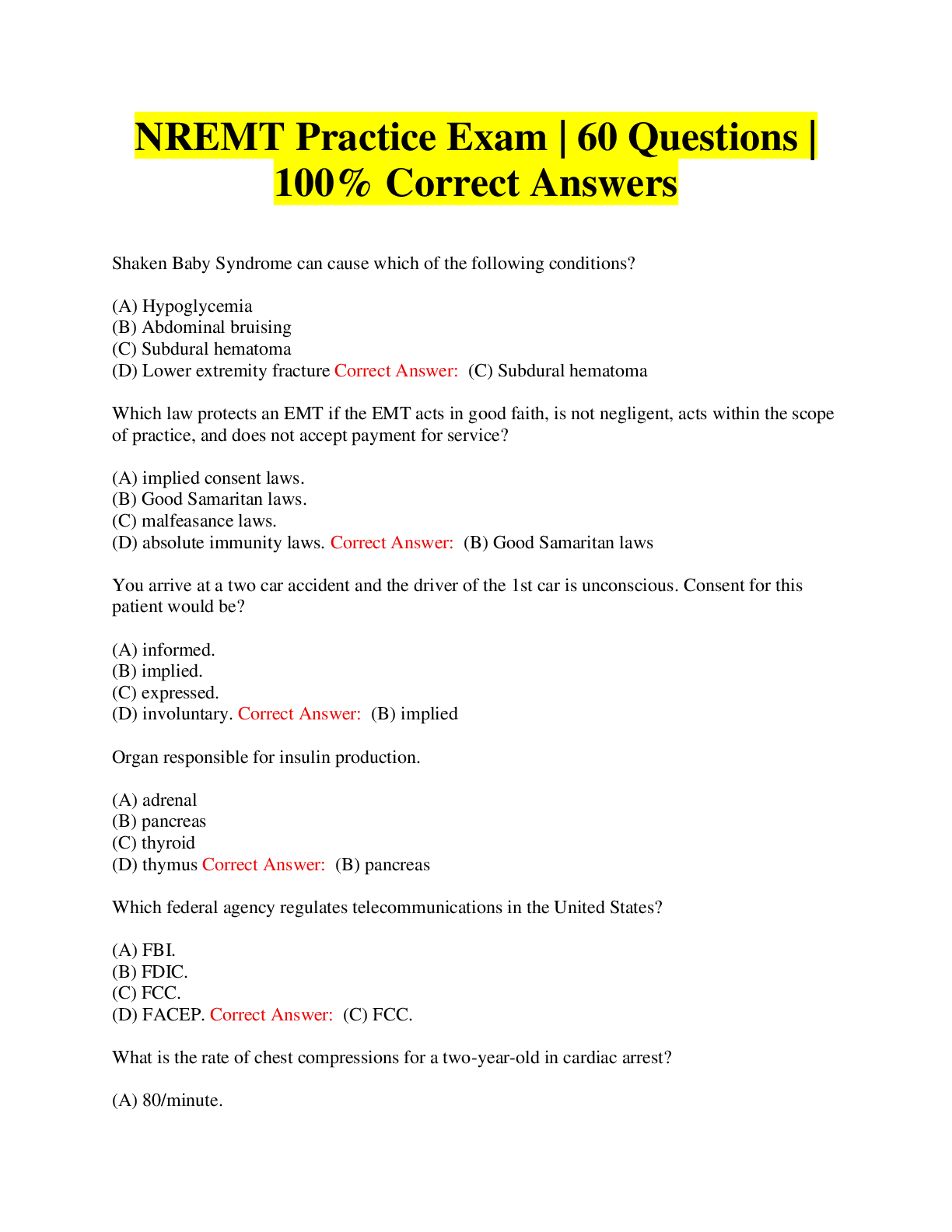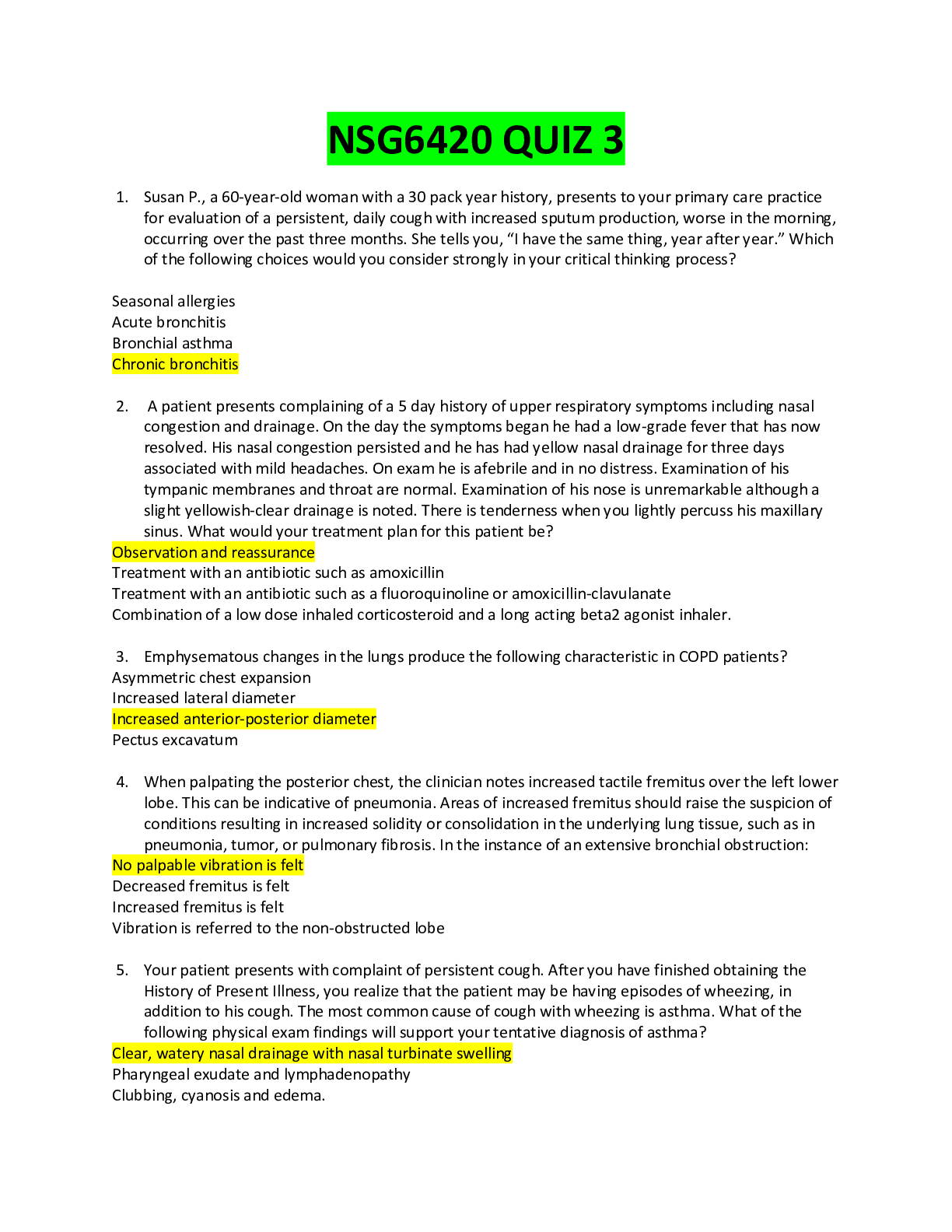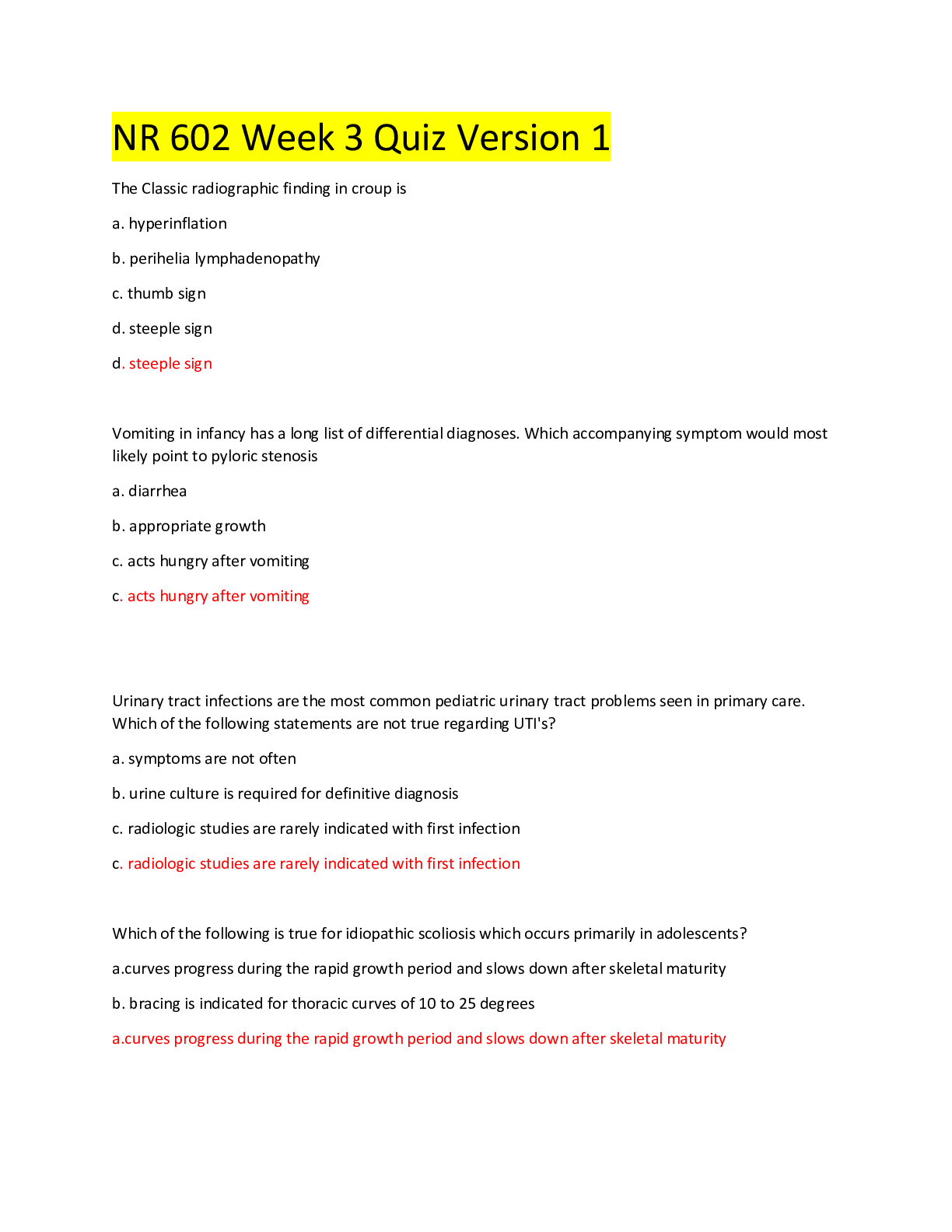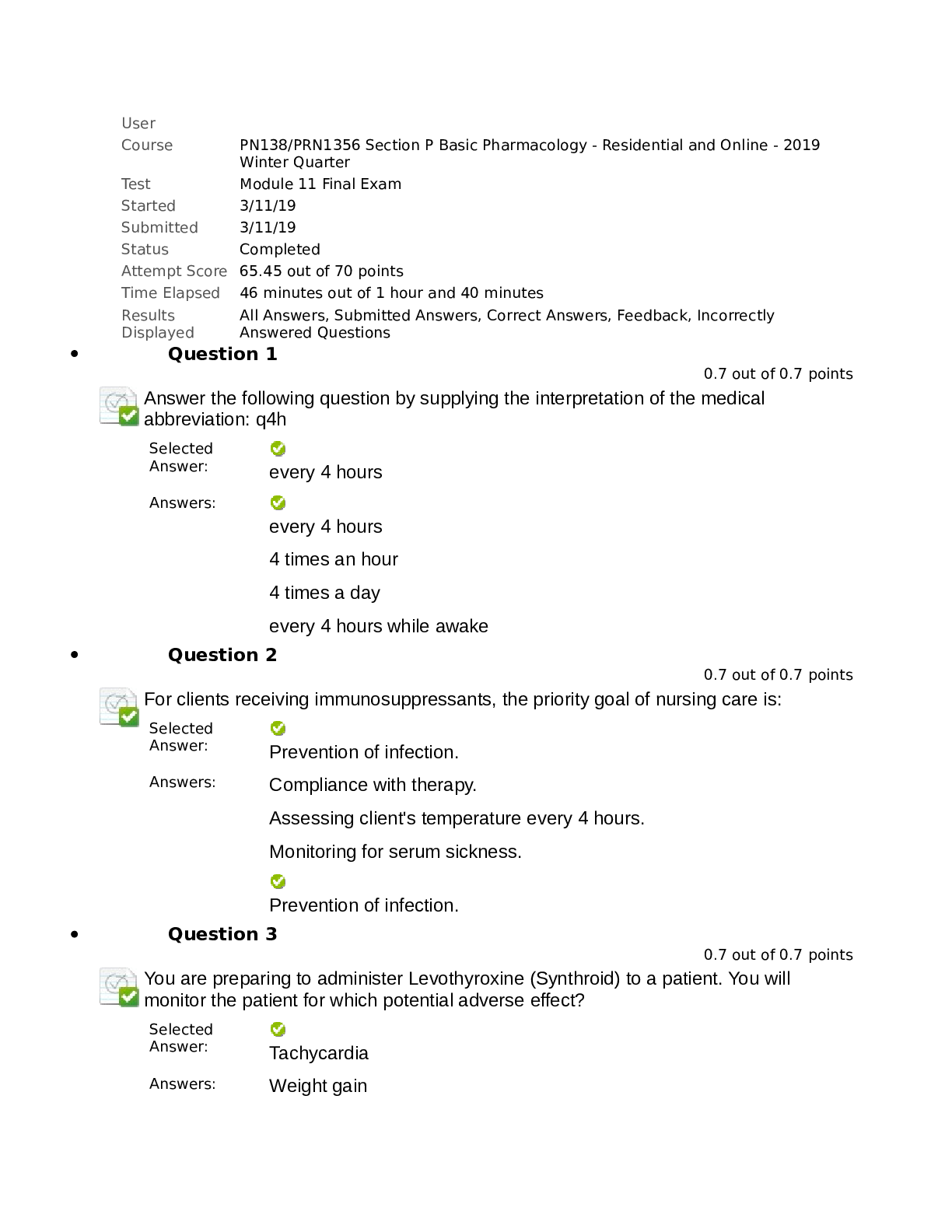Computer Science > EXAM > AWS - Elastic Load Balancer - FAQ's| QUESTIONS WITH COMPLETE SOLUTIONS (All)
AWS - Elastic Load Balancer - FAQ's| QUESTIONS WITH COMPLETE SOLUTIONS
Document Content and Description Below
How do I decide which load balancer to select for my application? Correct Answer: Elastic Load Balancing supports *three types of load balancers*. You can select the appropriate load balancer based... on your application needs. If you *need flexible application management and TLS termination then we recommend you to use Application Load Balancer*. If *extreme performance and static IP is needed for your application then we recommend you to use Network Load Balancer*. If your application is *built within the EC2 Classic network then you should use Classic Load Balancer*. Can I privately access Elastic Load Balancing APIs from my Amazon Virtual Private Cloud (VPC) without using public IPs? Correct Answer: Yes, you can privately access Elastic Load Balancing APIs from your Amazon Virtual Private Cloud (VPC) by creating VPC Endpoints. With VPC Endpoints, the routing between the VPC and Elastic Load Balancing APIs is handled by the AWS network without the need for an Internet gateway, NAT gateway, or VPN connection. The latest generation of VPC Endpoints used by Elastic Load Balancing are powered by AWS PrivateLink, an AWS technology enabling the private connectivity between AWS services using Elastic Network Interfaces (ENI) with private IPs in your VPCs. To learn more about AWS PrivateLink, visit the AWS PrivateLink documentation. What does an Internet-facing load balancer need or have? Correct Answer: The nodes of an internet-facing load balancer *have a public IP address*. The *DNS name of an internet facing load balancer is publicly resolvable to the public IP address of the node(s)*. What does an internal-facing load balancer need or have? Correct Answer: The nodes of an internal load balancer *have only private IP addresses*. The *DNS name of an internal load balancer is publicly resolvable to the private IP addresses of the nodes*. Therefore, internal load balancers can only route requests from clients with access to the VPC for the load balancer. Which operating systems does an Application Load Balancer support? Correct Answer: An Application Load Balancer supports *targets with any operating system currently supported by the Amazon EC2 service.* Which protocols does an *Application Load Balancer* support? Correct Answer: An Application Load Balancer supports load balancing of applications using *HTTP and HTTPS (Secure HTTP) protocols.* Is HTTP/2 Supported on an Application Load Balancer? Correct Answer: Yes. HTTP/2 support is enabled natively on an Application Load Balancer. Clients that support HTTP/2 can connect to an Application Load Balancer over TLS. [Show More]
Last updated: 2 years ago
Preview 1 out of 13 pages

Buy this document to get the full access instantly
Instant Download Access after purchase
Buy NowInstant download
We Accept:

Reviews( 0 )
$10.00
Can't find what you want? Try our AI powered Search
Document information
Connected school, study & course
About the document
Uploaded On
Nov 23, 2022
Number of pages
13
Written in
Additional information
This document has been written for:
Uploaded
Nov 23, 2022
Downloads
0
Views
179























.png)

